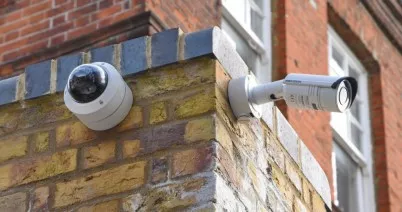
31 Aug What Is the Difference Between H.264 & H.265 Video Compression for Security Cameras
Have you ever been streaming a show online and then experienced a huge drop in quality, where it gets pretty difficult to see what is going on and the images get a little blurry?
If you’ve experienced this, you’re definitely not alone.
But this can also happen to your security camera equipment, depending on the type of video quality you’re looking for, the amount of bandwidth your video quality demands, and more.
But High Efficiency Video Coding (HEVC), also known as H.265, promises to bring some amazing improvements.
Let’s first discuss what video codecs are, and then discuss H.264 and H.265, as well as why H.265 is coming to disrupt the video streaming world completely… in a good way!
How Video Codecs Work
According to an article from CNET, “The amount of raw data coming out the back of a professional HD camera is a massive. There’s no way to conveniently transport it to your home. Instead, the video is compressed to reduce the amount of data into a more manageable form.”
Essentially, you can compress the data too much, resulting in terrible quality. Or you can compress it with a new technique while retaining the same quality.
In a nutshell, video codecs (like H.264 & H.265) work by essentially breaking a video down into bytes with algorithms, shrinking the file down and then decompressing it.
H.264
Also known as Advanced Video Coding (MPEG-4 AVC), H.264 was developed first in 2003 and has been known as the industry standard for video compression- notice the “has been known”. We consider it the most commonly used format for recording, compressing, and distributing video content. Most use it on streaming internet sources like YouTube and Vimeo.
H.265
New 4k devices and video streaming has become more popular. As a result, more bandwidth and storage capability will be even more necessary. This can be pretty demanding with H.264 and be a bit difficult to handle. It’s even more difficult considering the storage that 4k video takes up.
H.265, also known as High Efficiency Video Coding (HEVC), significantly improves coding efficiency -even more than H.264.
Why Is H.265 The Next Big Thing
High Efficiency Video Coding (H.265) is changing the game when it comes to video quality compression and storage. While it’s still fairly new, it’s gaining in popularity.
Here’s why H.265 is such a big deal and why it works better than H.264:
H.265 can reduce the file size even more while still retaining incredible visual quality, meaning less bandwidth and also requiring less storage space.
That’s right. H.265 codec is said to be able to double the compression (while still maintaining great quality) and also take up roughly half the space as H.264.
What Does H.265 Mean for Security Cameras?
No more having to suffer through sub par video quality when checking out your security camera’s live feed or feed that you’ve recorded and stored. This higher compression efficiency means maintaining a high standard of video quality coming from your device.
This also means that you can store more footage due to needing less space (better compression).
As I mentioned earlier, 4k video quality is great, but it takes up a lot of space with H.264. H.265 (HVEC) makes it so much easier to stream and download.
As H.265 becomes more popular, more devices will start utilizing this High Efficient Video Coding, like this 4MP IP Matrix Bullet Security Camera.
In Closing
For those with alarm systems that utilize security cameras, you’ve got some exciting times ahead as far as video streaming and quality are concerned.
Have any other questions about the differences between H.264 or H.265 that we didn’t answer in the blog? Make sure to leave a comment below!
If you are interested in arming your home with high-quality video cameras and ramping up your home defense, click here.


No Comments